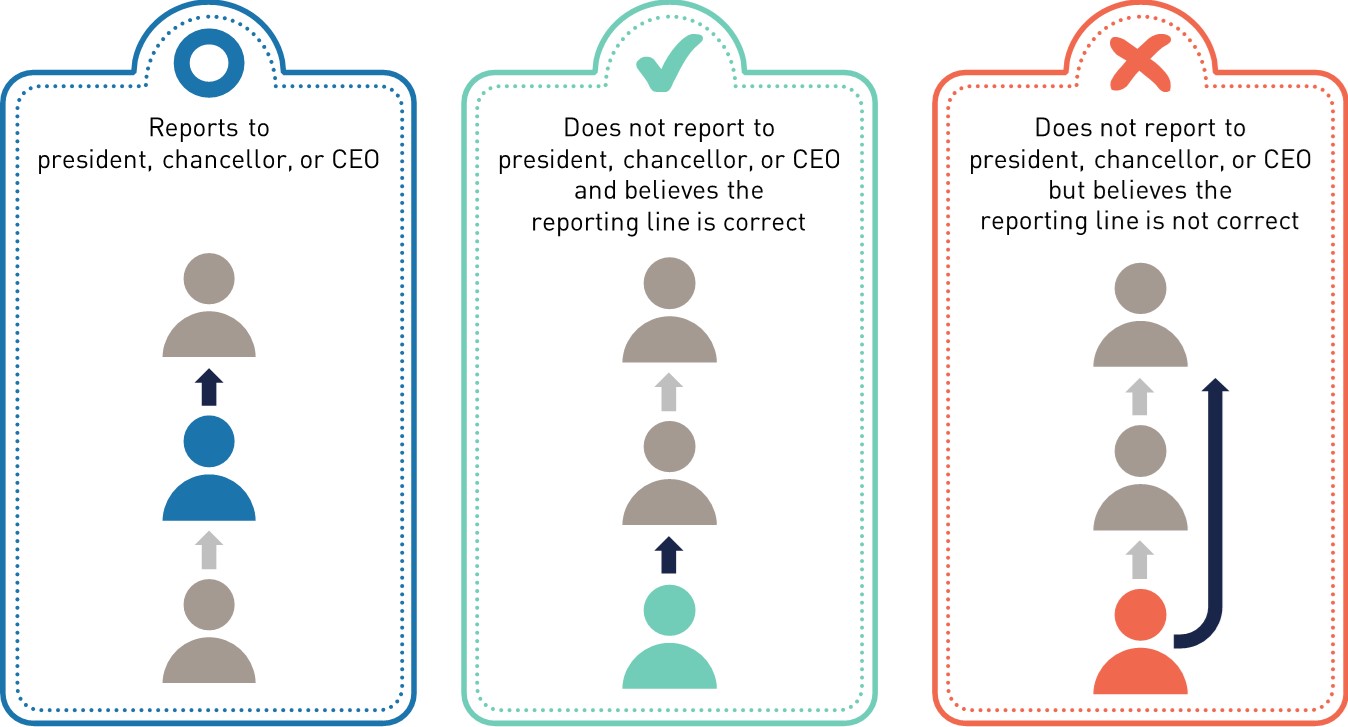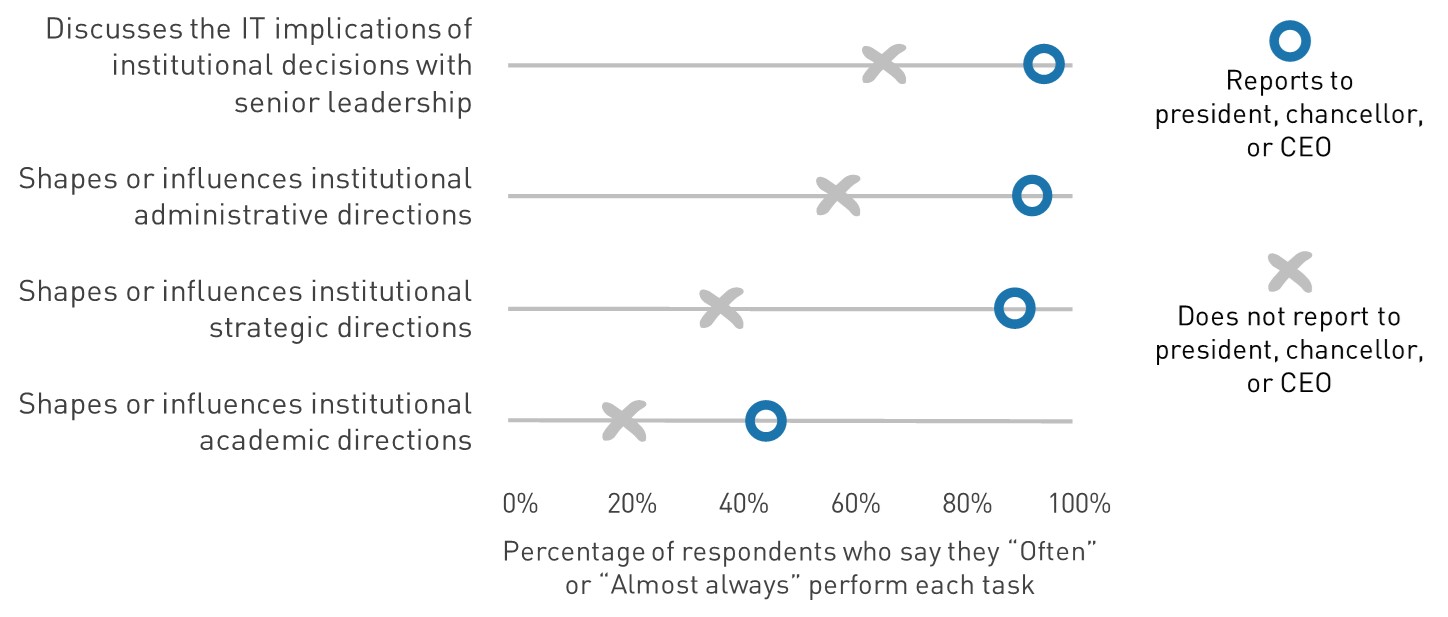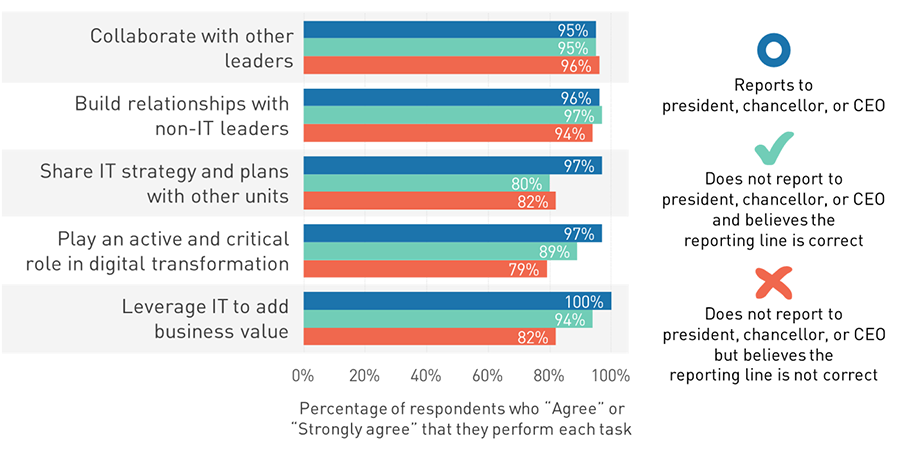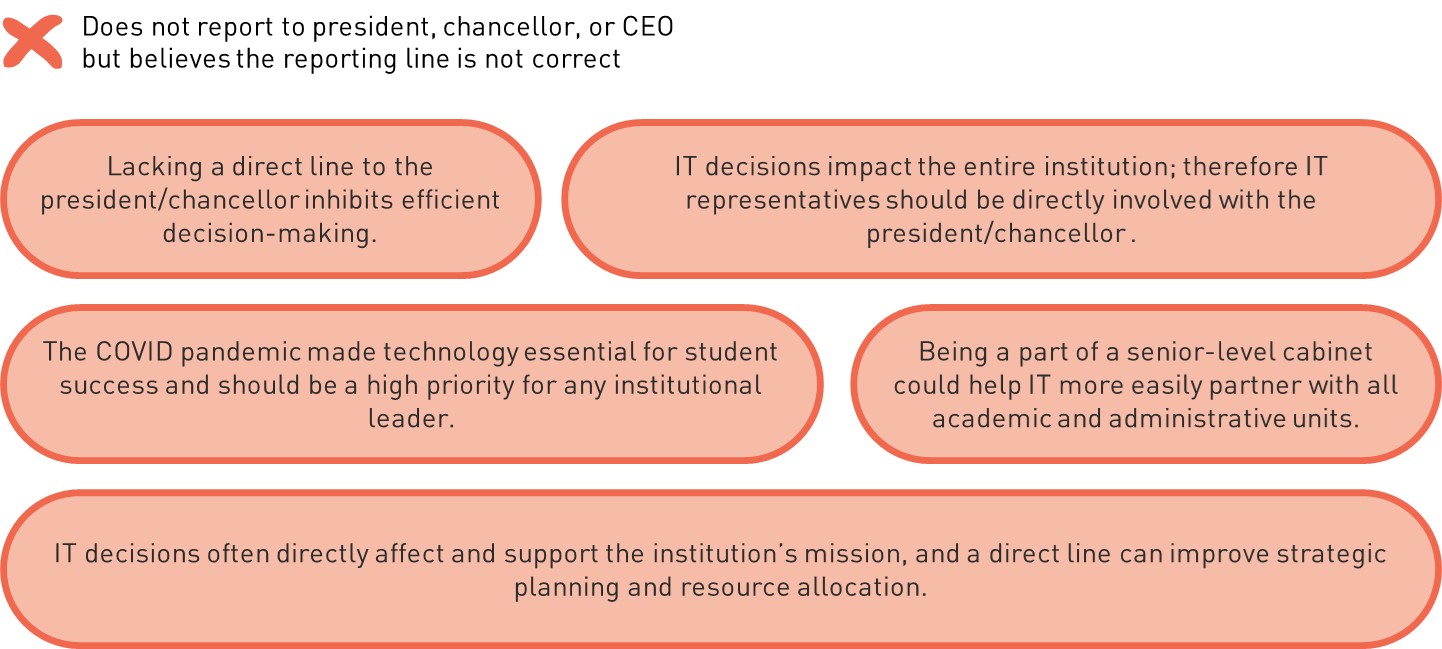The Technology Workforce in Higher Education, 2022

One of the most salient consequences of the COVID-19 pandemic on higher education has been a reduction and reorganization of the workforce. In the report Smaller and Restructured: How the Pandemic Is Changing the Higher Education IT Workforce, we share the voices of senior IT leaders surveyed in October 2021, and focus on respondents' open-ended descriptions of the impact of the pandemic on their units and on plans for reorganization.
In The Adaptive CIO: Balancing Institutional Structure and Culture, we explore how higher education IT leaders are taking on elevated strategic roles at their institutions, and how direct reporting lines and access to the highest levels of institutional leadership may be optimal for influence and efficacy. But institutional cultures that foster inclusion and collaboration may be even more important, regardless of reporting structure.
Smaller and Restructured: How the Pandemic Is Changing the Higher Education IT Workforce
Size of the IT Workforce
Most respondents (42%) reported that during 2021 their IT organization got smaller, but 26% of respondents indicated that their IT organization grew.
Read more about size of the IT workforce >
Plans for IT Reorganization
In the face of staff turnover and new service needs, IT units are evolving "to support the new normal" and "to support the students and workforce of the future."
Learn more about the plans for IT reorganization >
Resources for Action
Get access to additional resources, trainings and mentorship opportunities.
The Adaptive CIO: Balancing Institutional Structure and Culture
Reporting Structures
We asked our survey respondents to indicate which leadership position they report to—the president/chancellor, or officers of various functional units, or other administrative or academic leadership positions. A plurality of respondents (39%) said they report directly to the president/chancellor.
Read more about reporting structures >
Structure Still Matters
Consistent with previous EDUCAUSE research, we find that reporting lines still matter a great deal for CIOs’ influence and efficacy as leaders.Learn more about how structure still matters >
Culture Also Matters
Although reporting lines can make a difference for CIO influence and efficacy, they don’t preclude CIOs who do not report to the president/chancellor from finding ways to lead from wherever they are and make effective use of the resources they have.
Learn more about how culture also matters >
When Structure Compensates for Culture
Across almost all of our measures of influence and efficacy, the third category of CIOs—those who do not report to the president/chancellor and who feel that this reporting structure is not appropriate—lagged behind their peers.
Learn more about when structure compensates for culture >
Collaboration Over Structure
Leadership at its best is a highly relational and collaborative practice. It requires effective communication across the institution, as well as intentional focus on listening, respect, and empathy. It requires skill in building relationships across a diverse group of professionals working toward the common goal of supporting the institution’s mission.
Read more about collaboration over structure >
Reports and Supporting Materials






